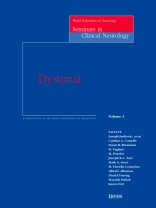This volume is the third in a series developed under the auspices of the World Federation of Neurology to meet the needs of neurologists who must practice medicine without many of the advantages that are often taken for granted in the industrialized world. It is targeted to neurologists practicing in low-resource environments and those who wish to practice cost-effective neurology, and addresses issues important for neurologists in developing countries that are not covered in standard textbooks. The series will update the reader in currently accepted diagnostic and management practice. Material is presented in a user-friendly, interactive manner, with abundant case material.
Dystonia is the third most common movement disorder after Parkinson’s disease and Tremor. It is a neurologic disorder characterized by involuntary, sustained, patterned and often repetitive muscle contractions of opposing muscles that force parts of the body into abnormal and sometimes painful postures. Dystonia can affect any part of the body and while not fatal, it is a chronic and debilitating disorder. Managing dystonic conditions can be difficult in developing countries where there are limited diagnostic and therapeutic resources. The use of botulinum toxin, considered the treatment of choice for many focal or segmental dystonias, is discussed in regard to its cost effectiveness in the setting of limited resources.
Dystonia provides a practical review of the disorder that emphasizes cost-effective evaluation and treatment and advice on how to apply the current knowledge in clinical practice. This text will be a welcome edition to the international literature on the subject.
Tabela de Conteúdo
Diagnosis, Classification, and Pathophysiology of Dystonia; The Genetics of Dystonia; Cranio-Cervical Dystonia; Limb and Generalized Dystonia; Medical and Surgical Treatment of Dystonia; Exercises for Cervical Dystonia.












